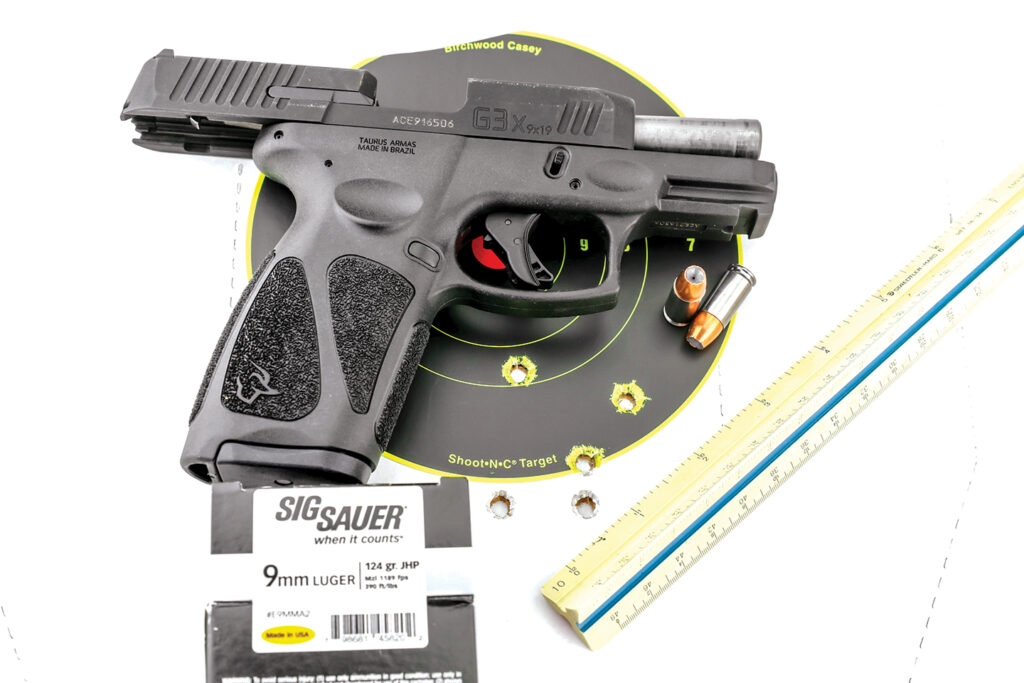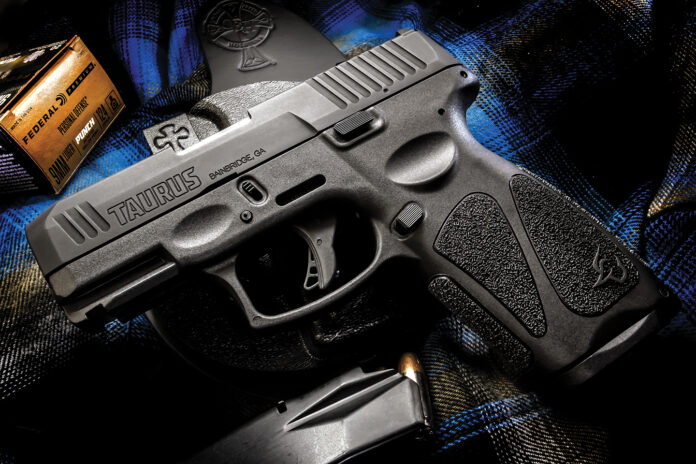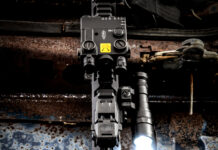Taurus G3X 9mm
By Massad Ayoob
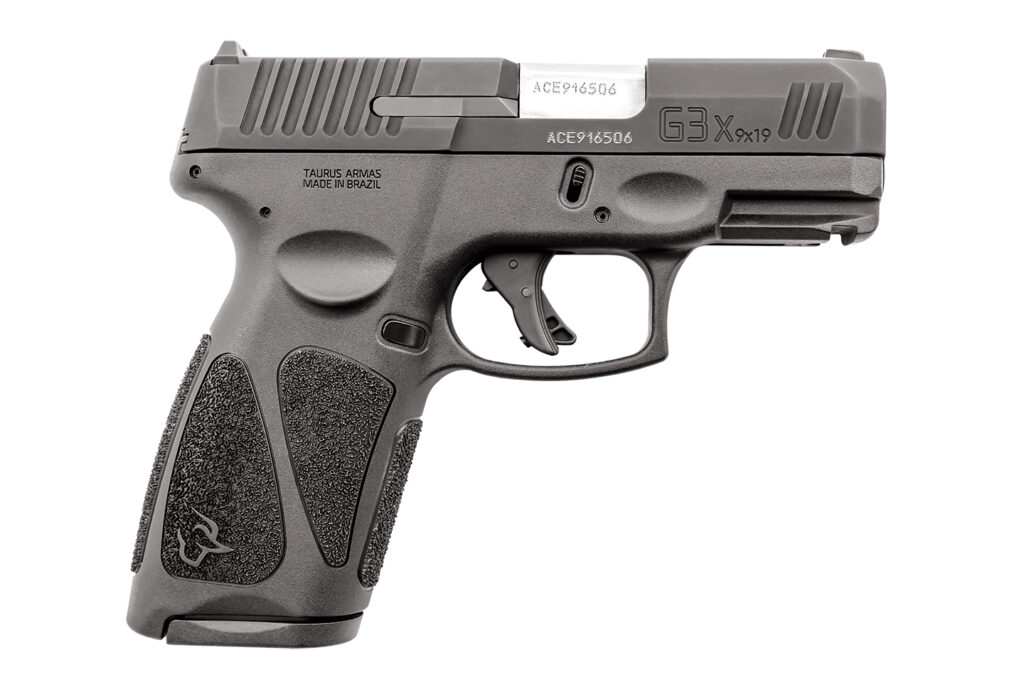
At $342.98, Taurus’ newest G3 is ridiculously priced … low-priced, that is
There was a time in the late ‘80s and early ‘90s when Taurus made very functional clones of Beretta pistols and S&W revolvers that gave excellent value for their comparatively low prices. Unfortunately, there followed a period when quality control slipped, badly hurting the brand’s reputation with me and many others. Thus, I was skeptical when I took this assignment from Ben Battles … but by the end of the test, it looked as if Taurus had redeemed itself.
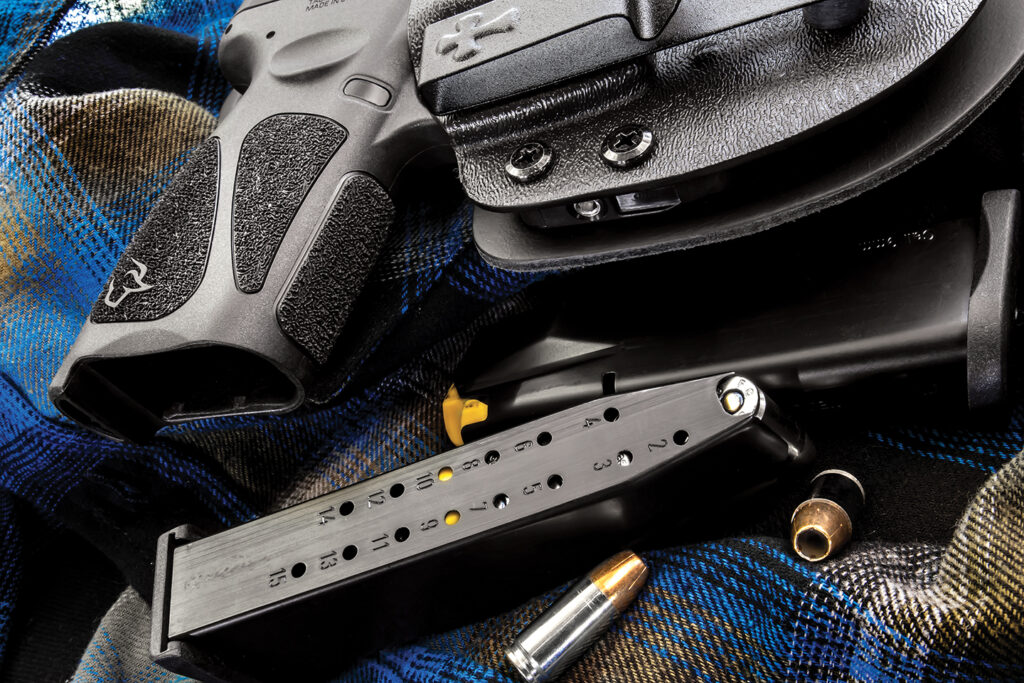
Out of the Box
Built at the new, modern plant in Brazil, the G3X presents itself as Taurus’ answer to the uber-popular Glock 19: a 15+1 round 9mm Parabellum, striker-fired with a polymer frame, no thumb safety, and Glock-ish takedown. Like the G19, it’s in that sweet spot “Mama Bear” size that’s suitable for uniform duty wear but also amenable to concealed carry and lets you get all your fingers on the grip for a solid hold. Ours came with two fifteen-round magazines. The frame has a depression on either side of the dust cover upon which to index the trigger finger in the ready position. This is a feature Taurus pioneered some twenty years ago on their early Millennium series and should be applauded for.
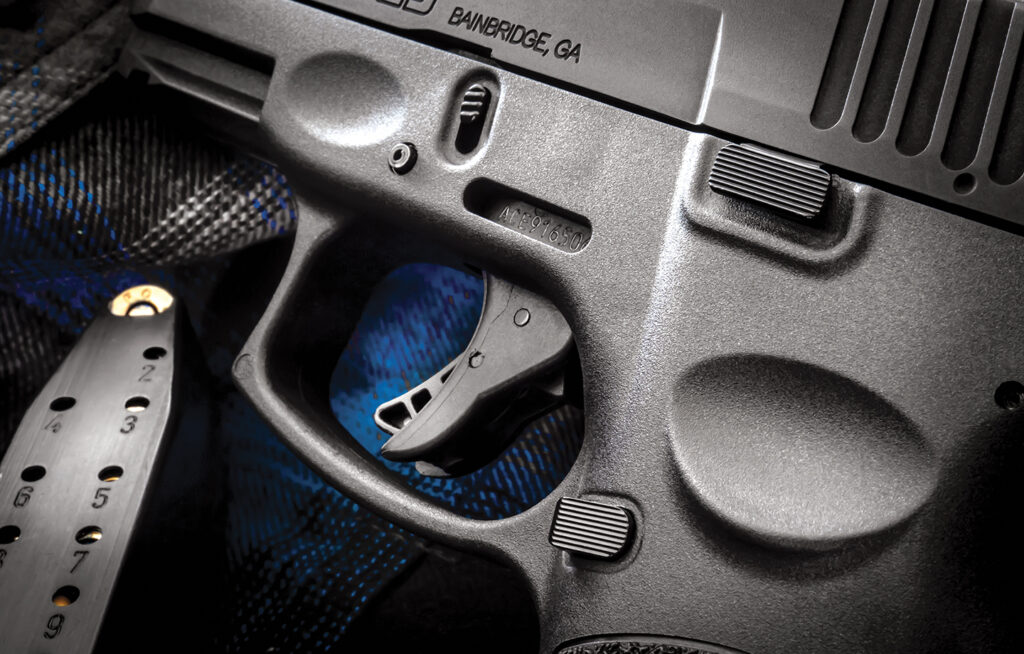
Handling
Trigger reach was about the same as the G19: in the average-sized adult male hand, the pad of the index finger comes naturally to the trigger when the barrel is in line with the forearm. Pointing — always a subjective characteristic — was good. The sights were decent: white dot post front, serrated square-notch fixed rear. Stippling was aggressive: when holding it tight, there was mild discomfort, and in shooting, a tiny “sting” in the palm reminded you that, yes, it was live ammunition. The grip filled the hollow of the palm nicely. For sure, it’s not going to slip.
The left-side-only mag release button was easy to reach and activate, even for this elderly tester’s arthritic thumb. Ejected magazines just shot right out of the bottom. The mags 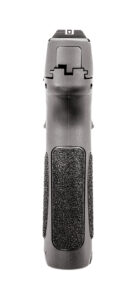 themselves were easy to fill up to capacity, even with arthritic hands, and easy to insert and positively lock in even when full up and with the slide forward.
themselves were easy to fill up to capacity, even with arthritic hands, and easy to insert and positively lock in even when full up and with the slide forward.
Trigger pull is a critical feature, of course, and on this pistol, that was … different. In live fire, or for the first dry fire press after you’ve racked the slide, there is a long and very light take-up until you “hit the wall” of firm resistance. Then, there’s a light, very short roll, and the shot breaks.
If you have a bad primer and get a misfire, the G3X is one of the rare polymer striker guns that gives you a second chance: “second strike” capability. It reminds me of the DAK (Double Action Kellerman, named after its designer) that SIG offered on their metal frame duty pistols. This follow-up pull will be heavier, with firm resistance from the beginning of the press.
How heavy? Using a Lyman digital gauge from Brownell’s, I started at the toe of the tabbed trigger and got an average pull weight of 5.021 pounds. This gun has a pivoting trigger, so the higher the finger, the less leverage and thus the more pressure required; at the center of the trigger where the finger actually lies, pull weight averaged 6.11 pounds — well within the established margin of safe “duty” trigger pull with striker-fired pistols. From the “oh, crap, I had a misfire!” trigger pull setting, average pull weight from the center of the trigger averaged 7.03 pounds.
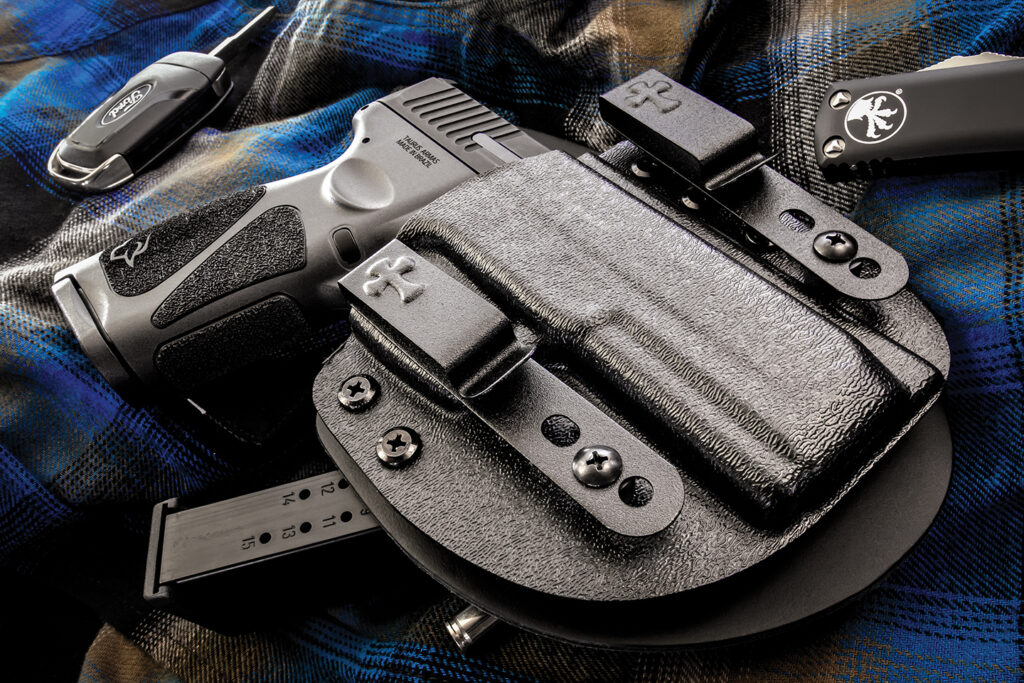
A Potentially Life-Saving Feature
The G3X is designed as a self-defense pistol. When the rapist/strangler/grizzly bear/whatever is right on top of you, you may have to press your gun muzzle right against the deadly threat and pull the trigger. Most semi-automatic pistols will go out of battery in that situation and fail to fire. This one, apparently, won’t! Its recoil spring guide design gives it “stand-off capability”: it will remain in battery (the parts in alignment to allow firing) and reward you with that life-saving shot. It continues to amaze me that Taurus, and other companies whose guns offer that potentially life-saving feature, do not advertise it.
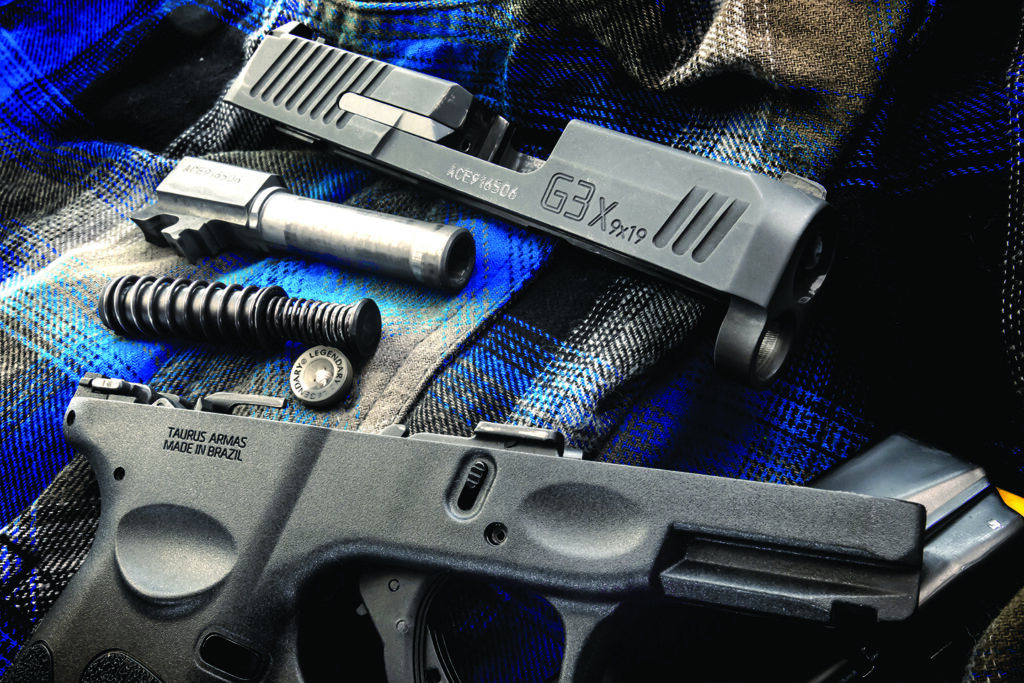
Accuracy
Testing was my usual protocol for accuracy: Caldwell Matrix rest on a concrete bench at 25 yards, five-shot groups measured once overall and again for the best three hits. Over the decades, I’ve found the “all-five” group shows what an experienced shooter can do with it under perfect conditions and that the “best-three” factors out enough human error to approximate what all five would have done from a machine rest, which most of our readers don’t have access to. This allows readers to test their own samples and compare them against ours more readily. Measurements are center to center between the farthest hits, measured to the nearest 0.05″. I try to use the three most popular bullet weights in the caliber.
I started with 147 grain subsonic; the Remington-UMC jacketed truncated cone training load. It was early in the test, and the light take-up made me wonder if I had a dead trigger. I had apparently lost focus because the first shot went low right, which I couldn’t blame on the gun. The next five shots went into 3.85” with the tightest trio in 1.00” even — much more promising, and an example of why I take that second measurement.
The 124-grain load was Sig’s famously accurate 124-grain Elite Performance jacketed hollow point, which lived up to its reputation with the best overall group of the test: 1.95”, with a “best three” measurement of 1.15”.
For 115 grain, I used American Eagle full metal jacket, my most often purchased personal 9mm training load. The group measured 3.95″ for all five hits and 1.90″ for the best three.
The average “best three” measurements indicated sub-two-inch group potential, and the five-shot groups were all well within the classic standard of “four inches at 25 yards is acceptable service pistol accuracy.”
We’ve discussed above only one aspect of accuracy, grouping capability. Another is point of aim/point of impact. At 25 yards, a 6 o’clock hold put all shots into the black Shoot-n-C bulls-eye target with 147 grain Remington. The same hold put the 124 grain Black Hills at 6 o’clock, so I went with a center hold for the 115 grain American Eagle and everything stayed in the black. (It’s par for the course for 9mm 147 grain subsonic to hit higher than 124 and 115-grain loads.) In short, the gun was sighted in from the factory. This is always a positive sign of quality control and inspection before the pistol is shipped.
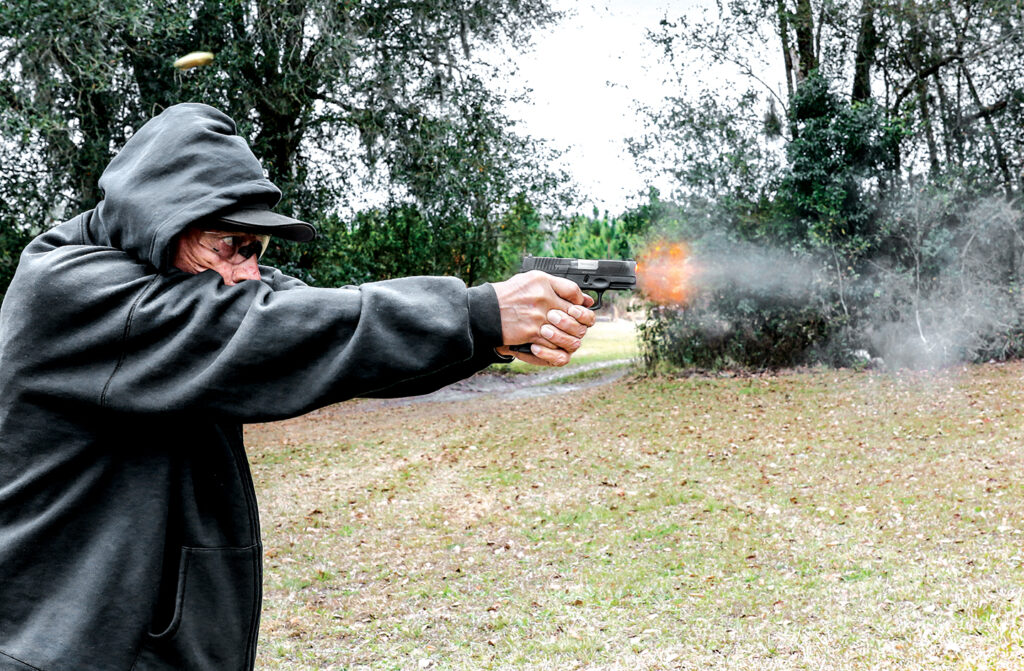
On the Clock
I shot the G3X over the civilian qualification course I give beginning students: six rounds in eight seconds one-hand-only with either hand at four yards, with two-handed shooting starting at seven yards, three cover positions from ten paces, and three different stances at fifteen yards for a total of sixty shots at about “Police Pistol Course” speed. The gun came back on target nicely between shots; the sight picture was adequate and speed reloads were a breeze. I wound up with one shot from fifteen yards just kissing the center zone’s line and fined myself one point, finishing with a 299 out of 300. 99.7% ain’t bad for an economy-grade pistol with a trigger pull that was new to the shooter and spoke well of the gun.
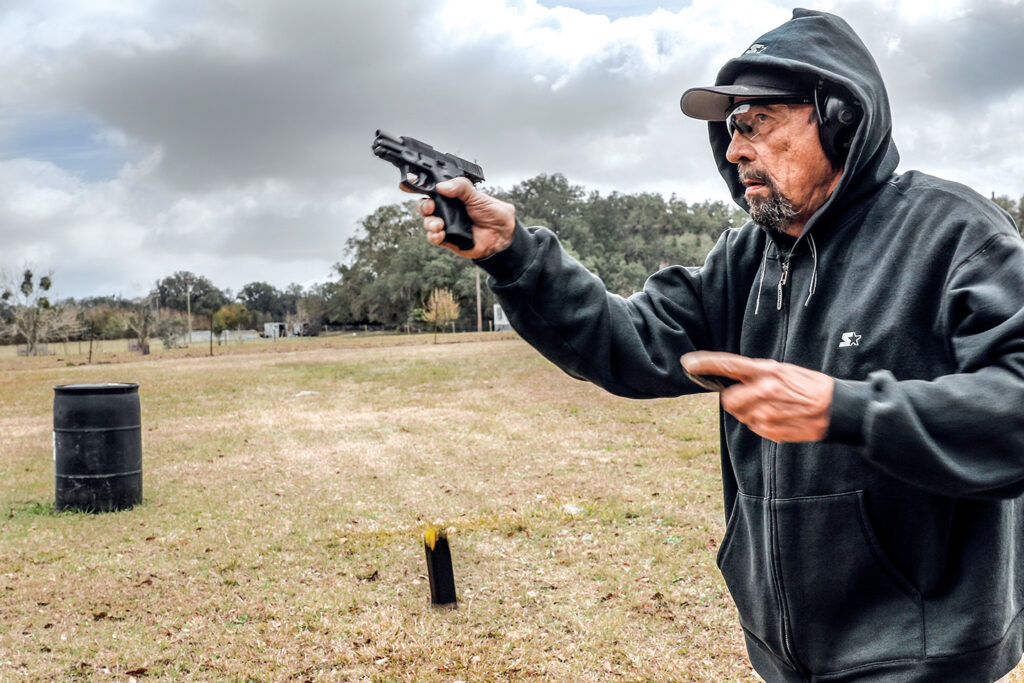
Bottom Line
We had one malfunction, a failure to extract (SIG JHP), in the course of a few hundred rounds. Like me, the testers who shot it were surprised by this economy-priced pistol’s accuracy and handling capabilities. Like any new model, it’s not going to have anywhere near the record for durability and reliability that the Glock has had decades to build. That said, though, the Taurus G3X sells for $342.98, an almost ridiculously low price. This will put it in the hands of many people who might not be able to afford a handgun that has had more time to build a reputation. I, and the other testers, were pleasantly surprised by the G3X’s good performance at its unusually low price point. See the entire G3 line at your nearest dealer, or for more information, contact Taurus USA; Tel.: (229) 515-8464; Web: www.taurususa.com.
